Catania: A Journey Through Time
Embark on a captivating journey through Catania's rich history and culture on this free walking tour, exploring stunning landmarks and vibrant streets.
Time
3 Hours
Stops
9 Places
Distance
3.8 km
Piazza del Duomo
Begin your tour at the heart of Catania in Piazza del Duomo, a UNESCO World Heritage site featuring the iconic Elephant Fountain and the stunning Catania Cathedral.
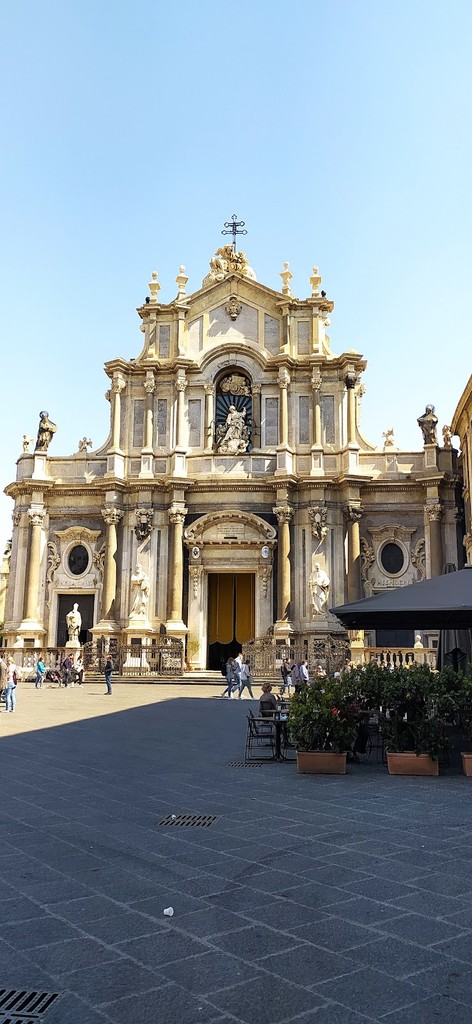
Piazza del Duomo (Source: Google Maps)
Piazza del Duomo is the central square of Catania, a UNESCO World Heritage site that showcases the city's rich Baroque architecture and history. The square features the magnificent Catania Cathedral, dedicated to Saint Agatha, and the iconic Elephant Fountain, known locally as 'Liotru.' The fountain, made of lava stone, symbolizes the city's resilience and strength, representing its connection to Mount Etna. The surrounding buildings, adorned with intricate carvings and statues, reflect the artistic heritage of the region. This vibrant square serves as a hub for locals and visitors alike, often bustling with life and cultural events.
Catania Cathedral (Cattedrale di Sant'Agata)
A short walk from the Piazza, visit the Catania Cathedral, dedicated to the city's patron saint, Saint Agatha, and admire its beautiful Baroque architecture.
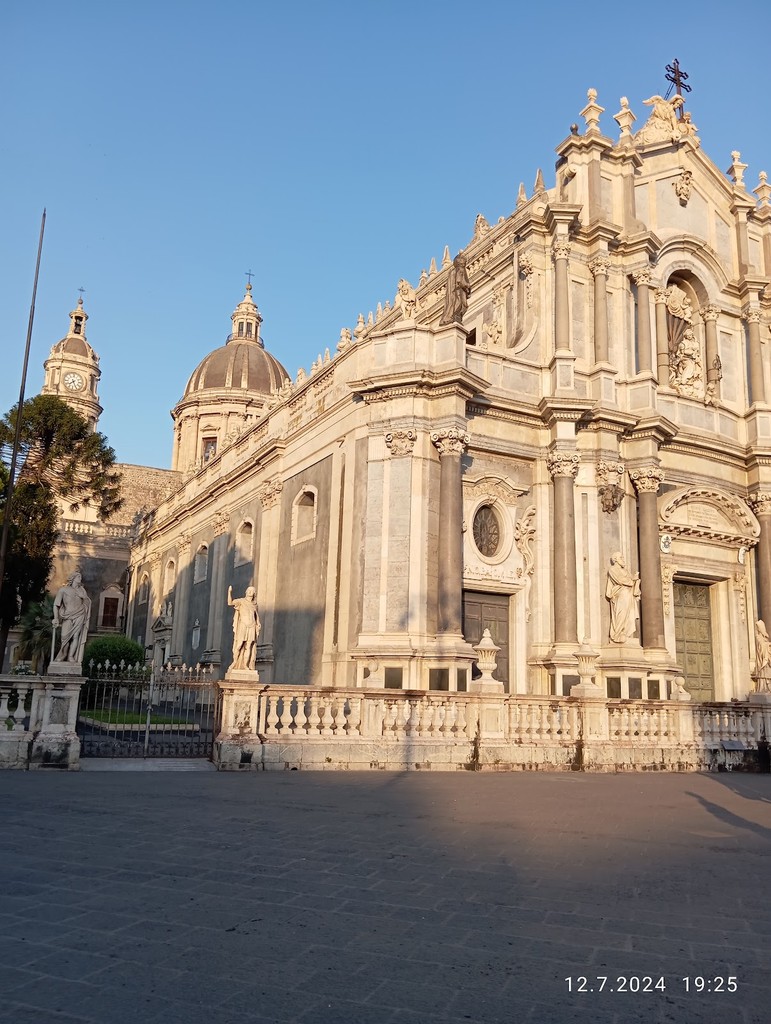
Catania Cathedral (Cattedrale di Sant'Agata) (Source: Google Maps)
The Catania Cathedral, dedicated to the city's patron saint, Saint Agatha, is a stunning example of Baroque architecture. Built in the 18th century, following the devastating earthquake of 1693, the cathedral features a beautiful façade adorned with statues and intricate details. Inside, visitors can admire the ornate chapels, a magnificent altar, and a crypt that houses the relics of Saint Agatha. The cathedral's design reflects the influence of various architectural styles over the centuries, showcasing Catania's rich history and religious significance. Its grandeur and spiritual importance make it a must-visit landmark in the city.
Palazzo degli Elefanti
Located within the same square, explore the Palazzo degli Elefanti, Catania's town hall, known for its impressive architecture and historical significance.
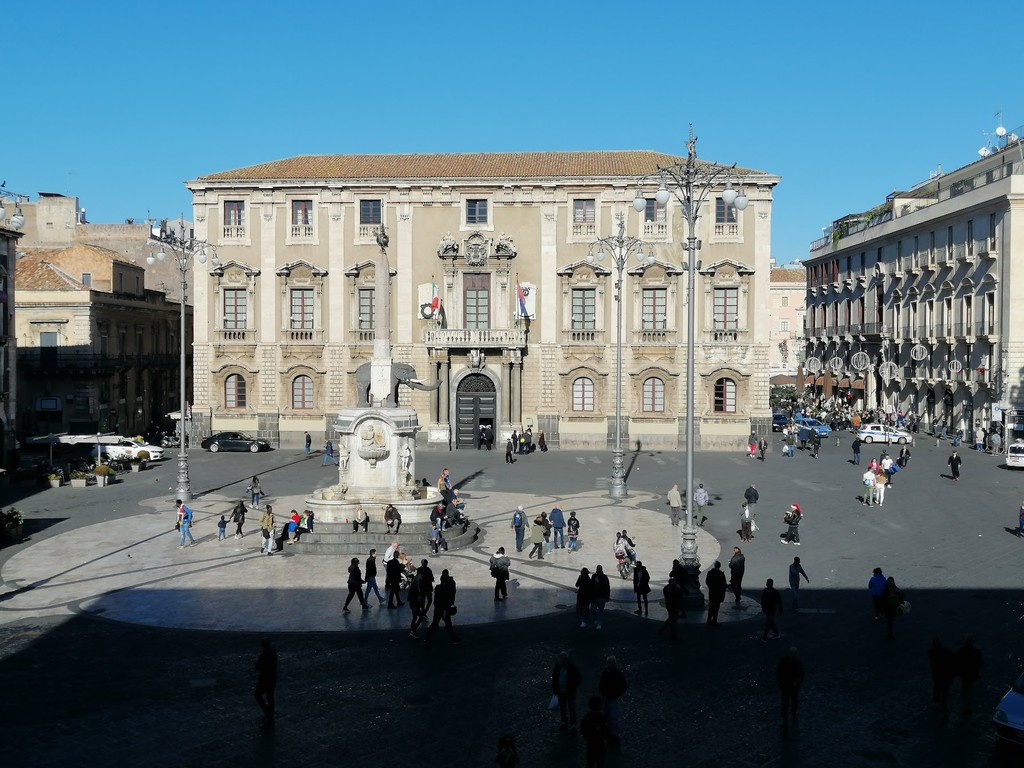
Palazzo degli Elefanti (Source: Google Maps)
Palazzo degli Elefanti, Catania's town hall, is an architectural gem located in Piazza del Duomo. Built in the 18th century, it features a stunning façade adorned with elegant columns and intricate designs. The palace is notable for its grand staircase and the impressive clock tower that dominates the square. Historically, it has served as the seat of local government and is a symbol of the city's civic pride. The building is named after the Elephant Fountain nearby, which represents the city's identity. Visitors can appreciate the harmonious blend of history and architecture that defines this significant landmark.
Via Etnea
Stroll along Via Etnea, Catania's main shopping street, which offers a vibrant atmosphere and views of Mount Etna in the distance.
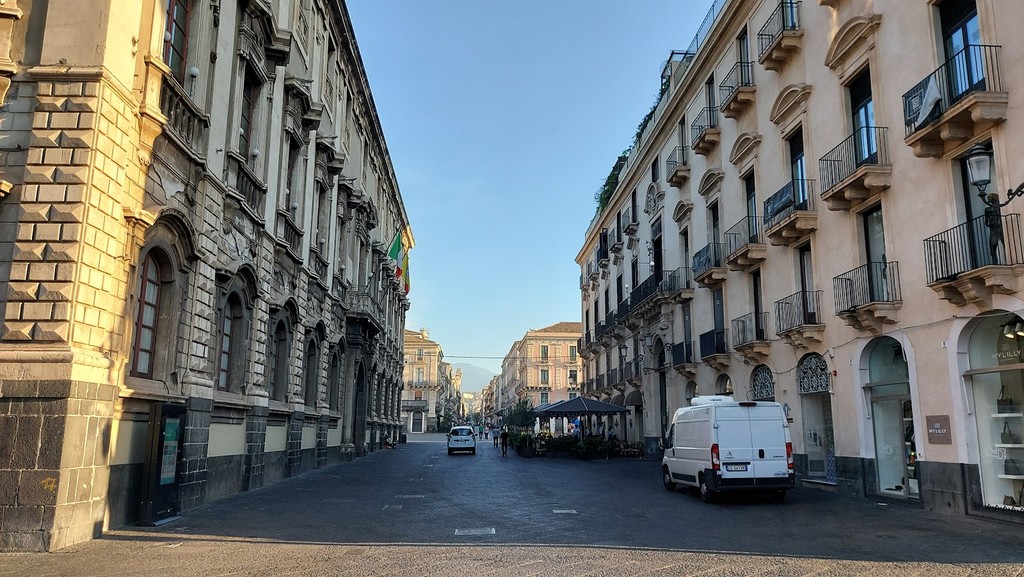
Via Etnea (Source: Google Maps)
Via Etnea is Catania's main thoroughfare, known for its vibrant atmosphere and bustling activity. This lively street stretches from Piazza del Duomo to the foot of Mount Etna, offering a mix of shops, cafes, and restaurants. As you stroll along, you'll encounter beautiful Baroque buildings, lively markets, and stunning views of the iconic volcano. Via Etnea is not just a shopping destination; it is a cultural hub where locals gather, showcasing the essence of Catania's daily life. The street is also home to various historical landmarks, making it a perfect spot for both leisure and exploration.
Teatro Massimo Bellini
Head towards the Teatro Massimo Bellini, an exquisite opera house named after the famous composer Vincenzo Bellini, where you can admire its ornate design.
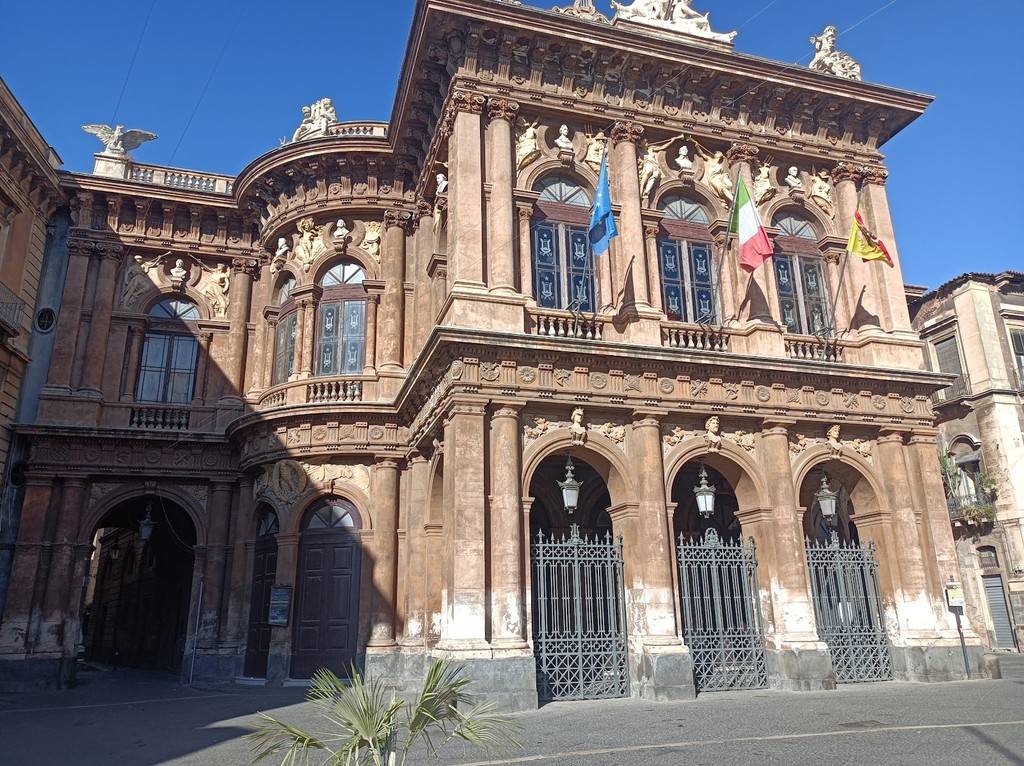
Teatro Massimo Bellini (Source: Google Maps)
Teatro Massimo Bellini is one of Italy's most prestigious opera houses, named after the renowned composer Vincenzo Bellini, who was born in Catania. The theater, completed in the late 19th century, is an architectural masterpiece featuring a neoclassical façade and opulent interiors with lavish decorations. It is known for its outstanding acoustics and hosts a variety of performances, including operas, concerts, and ballets. The theater plays a vital role in Catania's cultural scene, attracting both local and international artists. A visit to Teatro Massimo Bellini offers a glimpse into the city's rich musical heritage and artistic endeavors.
Roman Amphitheater
Just a short walk away, discover the Roman Amphitheater of Catania, an ancient structure that showcases the city's long history and Roman heritage.
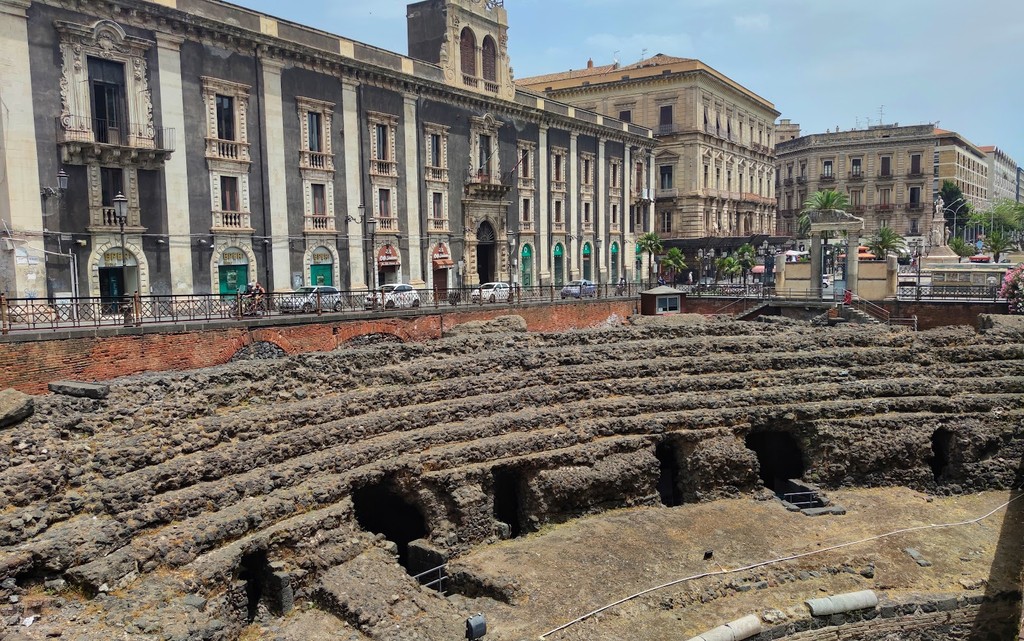
Roman Amphitheater (Source: Google Maps)
The Roman Amphitheater of Catania is an impressive ancient structure that dates back to the 2nd century AD. It is one of the largest amphitheaters in Sicily, capable of seating thousands of spectators. The amphitheater was used for various events, including gladiatorial contests and theatrical performances. Its well-preserved ruins showcase the architectural ingenuity of the Romans, featuring intricate stonework and the remains of the seating tiers. Today, the site serves as a significant archaeological landmark, providing insights into Catania's Roman heritage and the city's historical development. It stands as a testament to the enduring legacy of Roman civilization in Sicily.
Villa Bellini
Continue your walk to Villa Bellini, a beautifully landscaped public garden that provides a tranquil escape and a chance to enjoy the local flora.
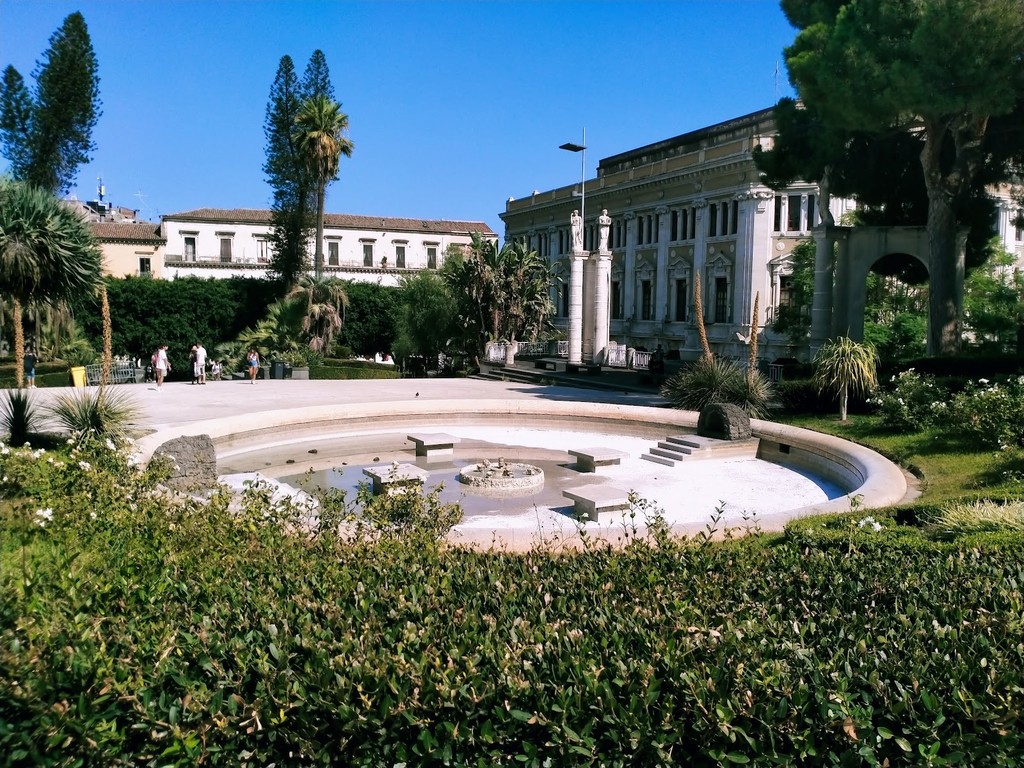
Villa Bellini (Source: Google Maps)
Villa Bellini is a beautifully landscaped public garden located in the heart of Catania. Established in the 18th century, the garden offers a serene escape from the bustling city, featuring lush greenery, vibrant flowers, and stunning views of Mount Etna. Visitors can enjoy leisurely strolls along winding paths, relax on benches, or admire the various fountains and sculptures scattered throughout the park. The villa itself is an architectural gem, reflecting the elegance of the period. It serves as a popular spot for locals and tourists alike, hosting cultural events and concerts, making it a vital part of Catania's social and recreational life.
Monastero dei Benedettini
Visit the Monastero dei Benedettini, one of the largest Benedictine monasteries in Europe, known for its stunning architecture and cultural exhibitions.
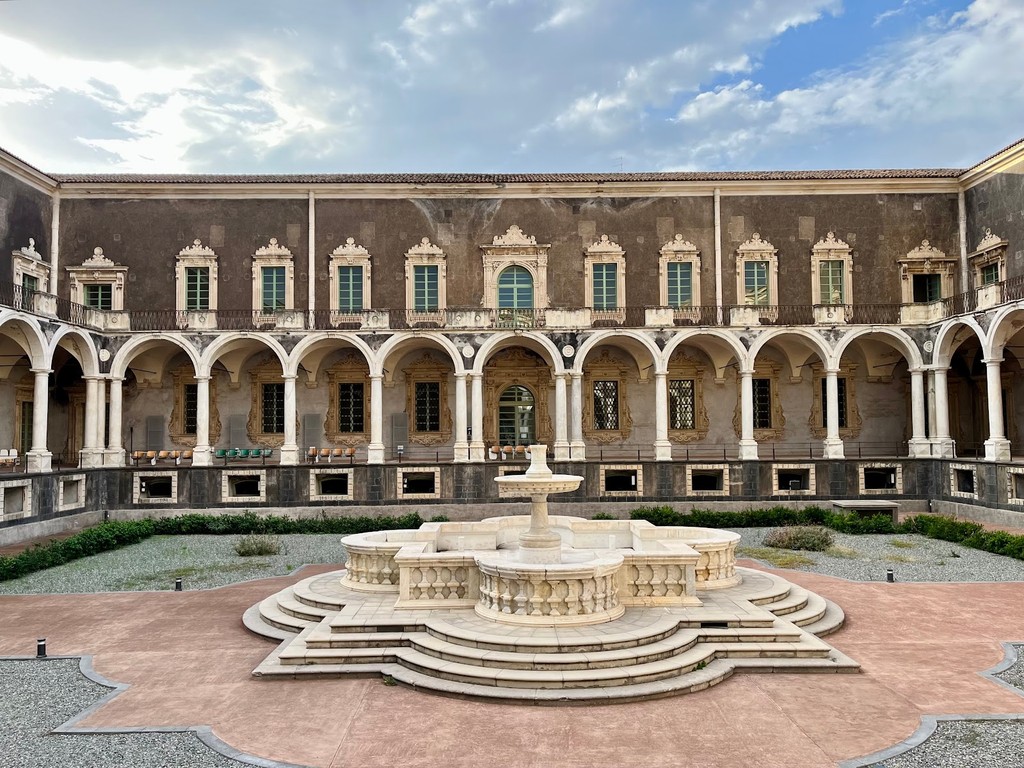
Monastero dei Benedettini (Source: Google Maps)
Monastero dei Benedettini, one of the largest Benedictine monasteries in Europe, is a UNESCO World Heritage site known for its stunning architecture and historical significance. Built in the late 16th century, the monastery showcases a blend of Baroque and Norman styles, featuring elaborate facades and intricate details. It served as a religious center for centuries and now houses the University of Catania. Visitors can explore its vast courtyards, beautiful chapels, and remarkable frescoes that depict the monastery's rich spiritual heritage. The site also hosts cultural exhibitions, making it a key location for understanding Catania's religious and artistic history.
Castello Ursino
Conclude your tour at Castello Ursino, a medieval castle that now houses a museum, offering insights into Catania's history and art.
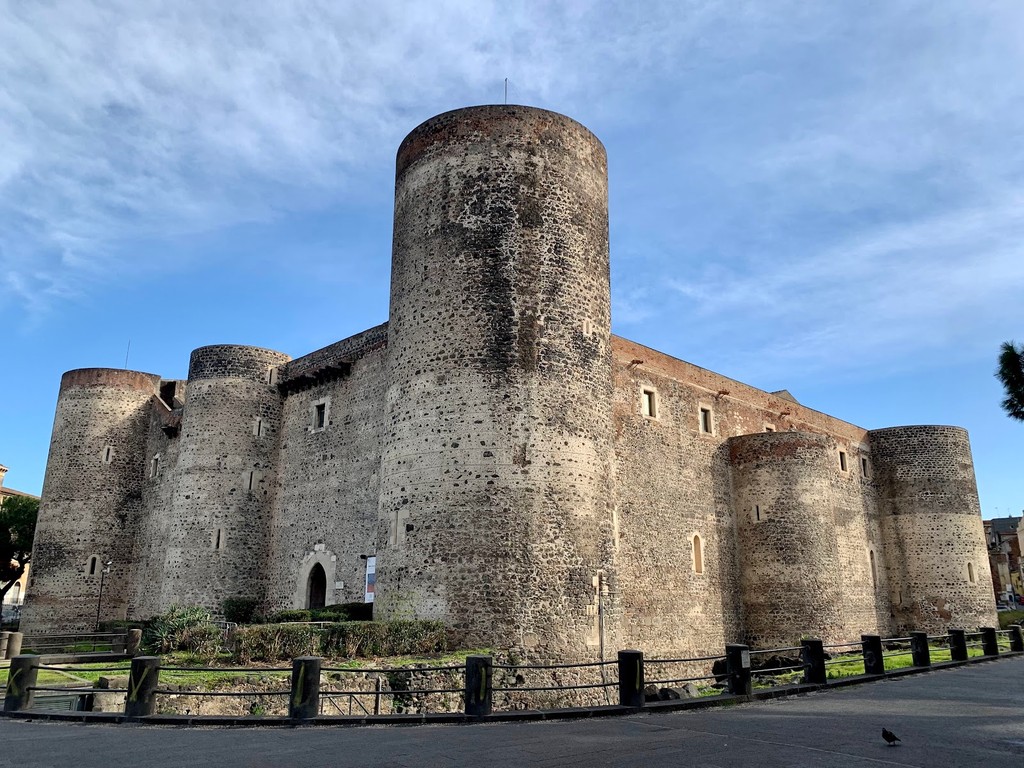
Castello Ursino (Source: Google Maps)
Castello Ursino is a medieval castle that dates back to the 13th century, originally built by the Emperor Frederick II. The castle is characterized by its robust stone walls and towers, reflecting the military architecture of the time. Over the centuries, it has served various purposes, including a royal residence and a fortress. Today, Castello Ursino houses a museum that showcases a collection of artifacts, paintings, and sculptures, offering insights into Catania's history and art. The castle's historical significance and architectural grandeur make it a prominent landmark, attracting visitors interested in the city's medieval past.

Your travels, your rules.
Create your own Free Walking Tours.
Set your preferences, distances and anything you want to do or see.
Completely free, no payment required.